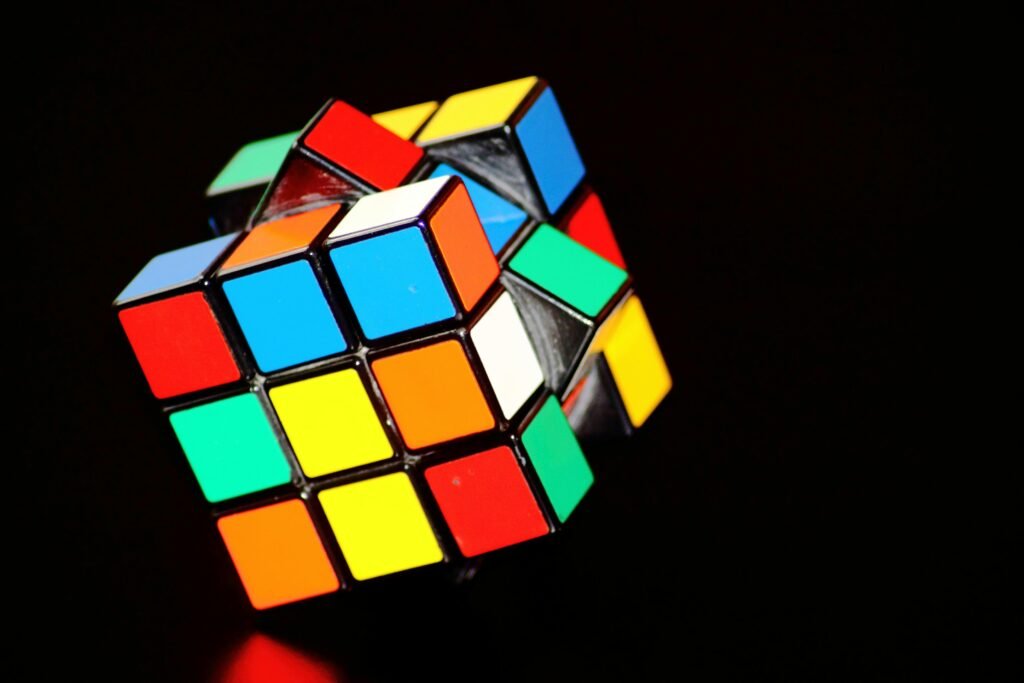Table of Contents
When you think of iconic puzzles, the colourful twisty Rubik’s cube is the first thing that comes to our mind. Invented in 1974 by the Hungarian architect Ernö Rubik, this cube has captured curiosity of millions of people worldwide, becoming not only a beloved toy but also an intellectual challenge and innovation. In this article, we’ll explore the Rubik’s cube’s fascinating history and why it is so popular.

The Origin of the Rubik’s cube
Originally, Ernö Rubik didn’t set out to invent a puzzle; he focused on solving the problem of structural design. He wanted to create a model to help his students understand three dimensional spaces, so he developed a small, twisting cube where each face could rotate independently. When he scrambled it and attempt it to return it to its original state, he realised that he had created a complex puzzle something more than a simple teaching tool.
The puzzle became known as “magic cube” before being renamed as “Rubik’s cube”. By the 1980s,it was a global sensation, and millions of cubes were sold, establishing it as a cultural icon.
How does the Rubik’s cube work?
The Rubik’s cube might look simple, but its mechanics is quite ingenious. The standard 3×3×3 cube has six faces, each originally made up of nine squares or “cubies”, of the same colour. When scrambled, each face mixes, creating an array of colours.The challenge is to return each face to a uniform colour. The cube’s core allows each of its faces to rotate independently, meaning a piece moved to one side could affectother pieces in unexpected ways. While the cube has a relatively small structure, the number of possible positions is shocking; around 43 quintillion combinations (1 quintillion is 1 followed by 18 zeroes)!
The challenge of solving the Rubik’s cube
1.The beginners method
An easy-to-follow series of steps, often recommend for beginners. It involves creating a cross on one face, and then completing that face and then solving the cube layer by layer.
2.CFOP method(Cross,F2l,Oll,Pll)
Wildly used by speedcubers, this advanced method breaks the solution into steps and relies on a series of algorithms to optimize solving time.
3.ZZ or Roux method
Alternatives to the CFOP, these methods are popular among some speedcubers who prefer different approaches to solving the cube. Each of these methods requires a series of moves called algorithms, which form patterns to align certain cubies without disturbing the others. With patience, anyone can learn these algorithms and eventually master the cube’s consistency.
Click here to learn more about solving the cube.
Why is the Rubik’s cube so popular?
1.Mental Challenge
Solving the cube requires logical thinking, spatial awareness and memory skills. It’s a fun brain workout, and studies suggest that it can improve cognitive functions.
2.Personal achievement
Mastering the cube brings a sense of personal achievement, especially when it seemed impossible at first site. This challenge attracts millions of enthusiasts.
3.Competitive spirit
With the rise of speedcubing (solving the cube as fast as possible), enthusiasts worldwide compete with each other to set new world records. The World Cubing Association (WCA) organises
competitions where participants attempt to solve the cube under 10 seconds or even blindfolded!
Do you want to learn the Rubik’s cube? Which method will you use to learn to solve it? Let us know in the comments section.
You might also like: Monty Hall Problem | Russia Ukraine War | Ratan Tata
